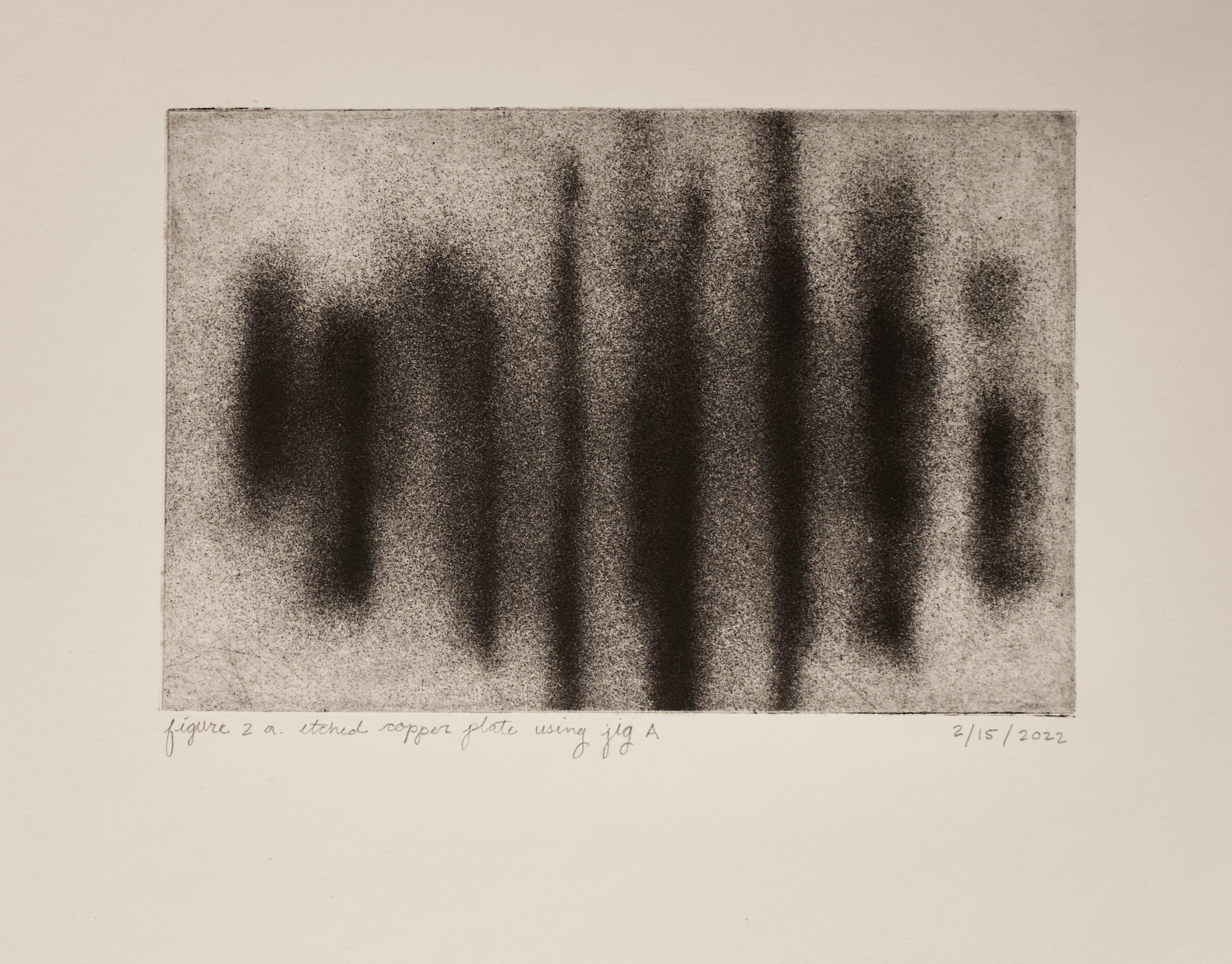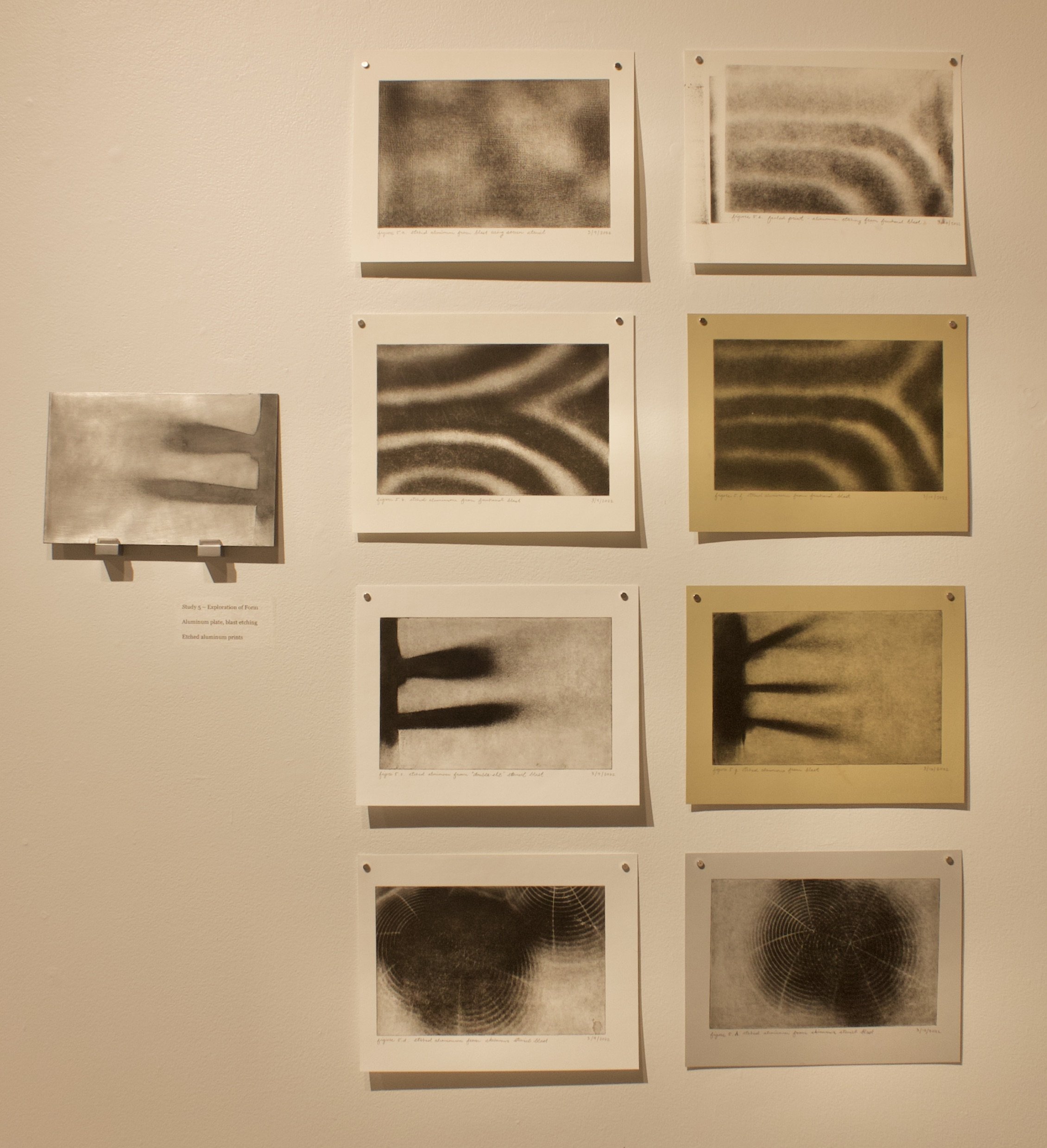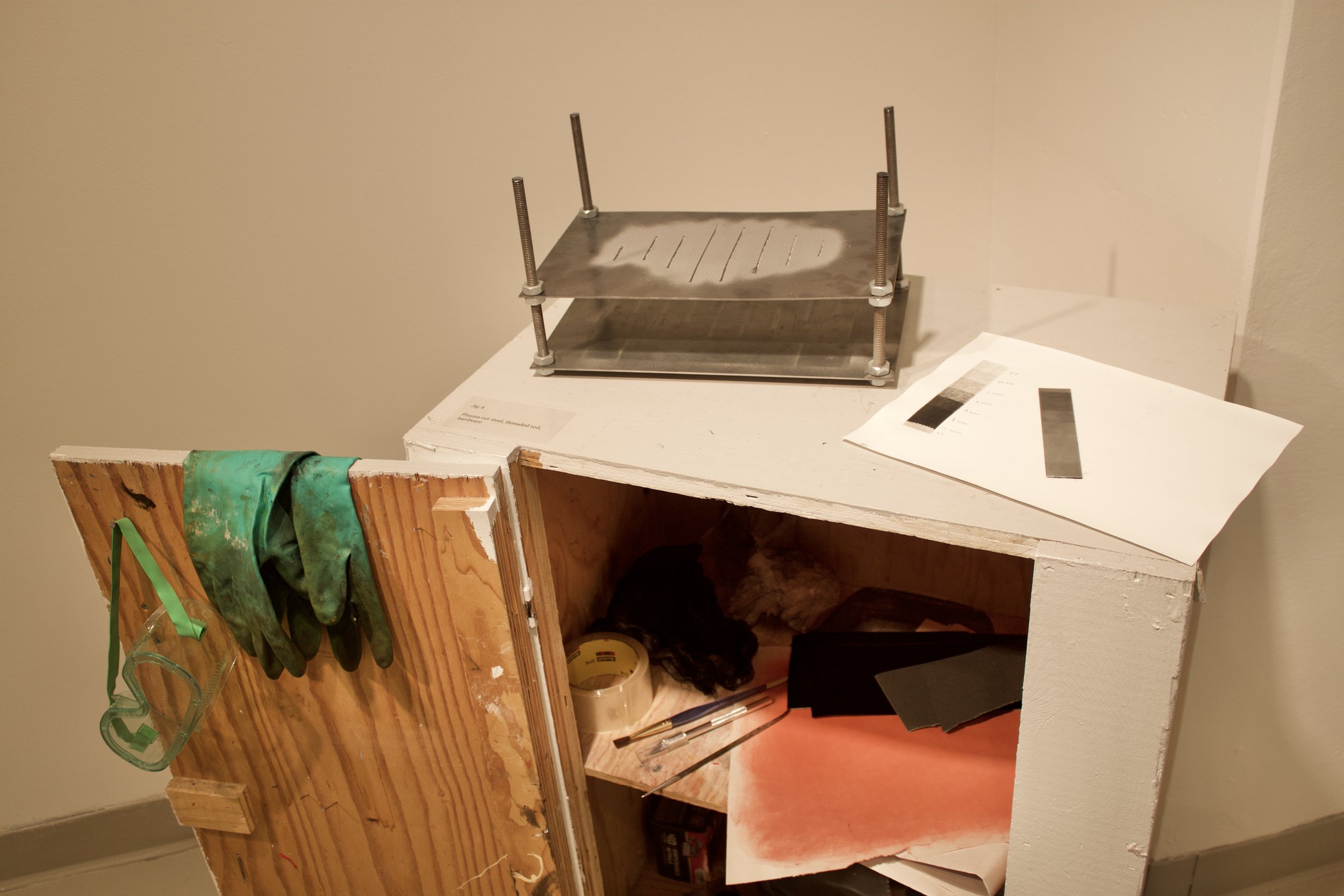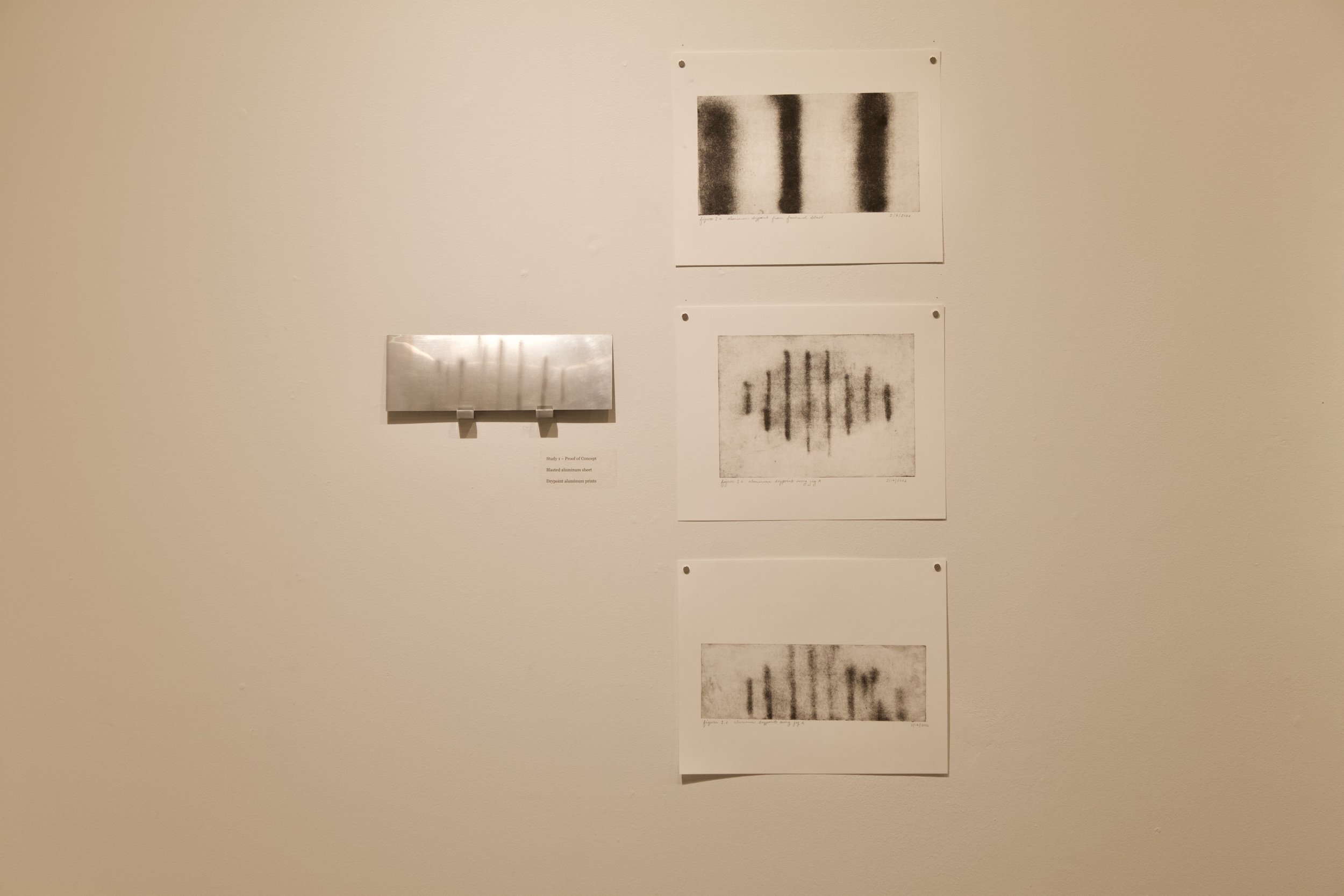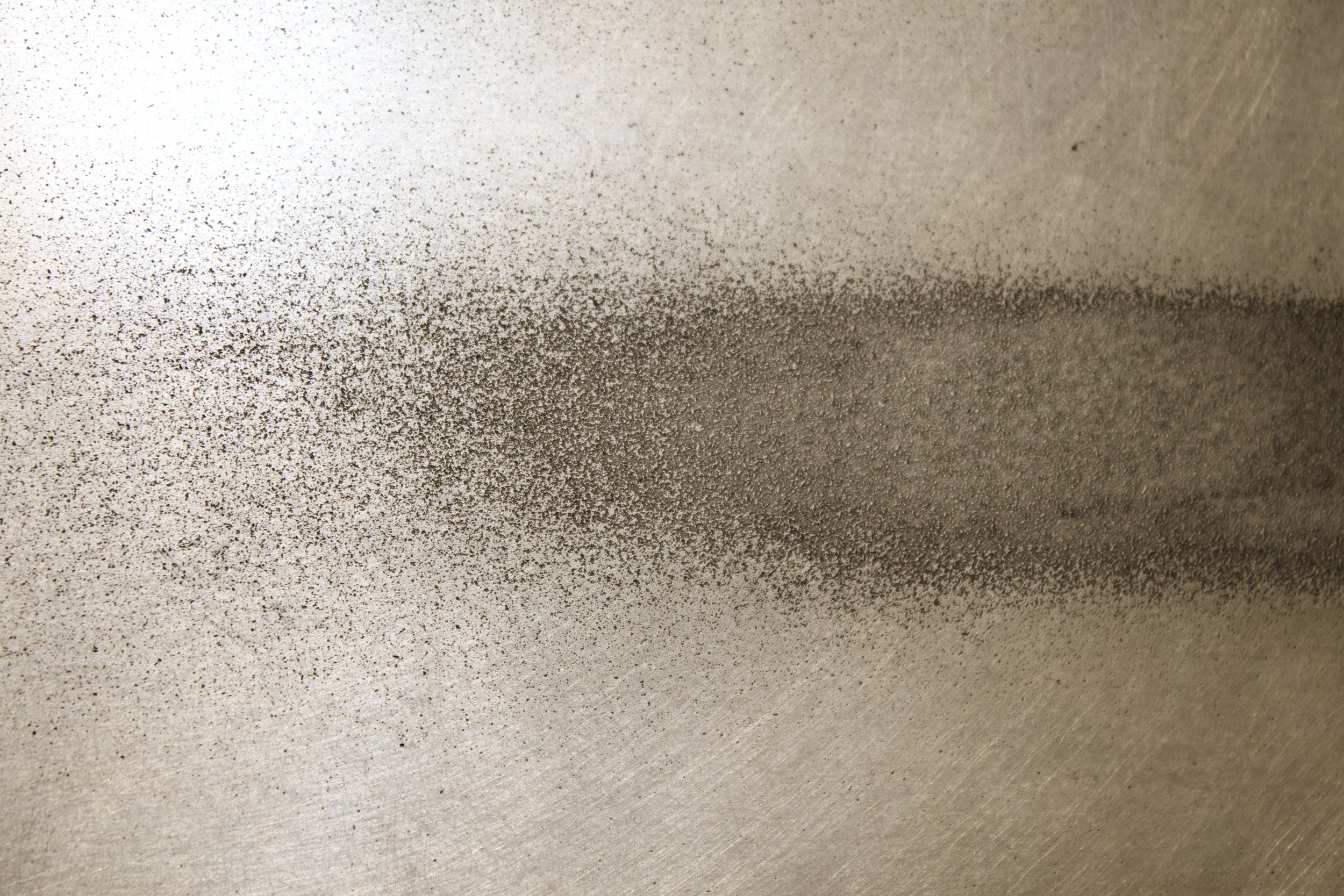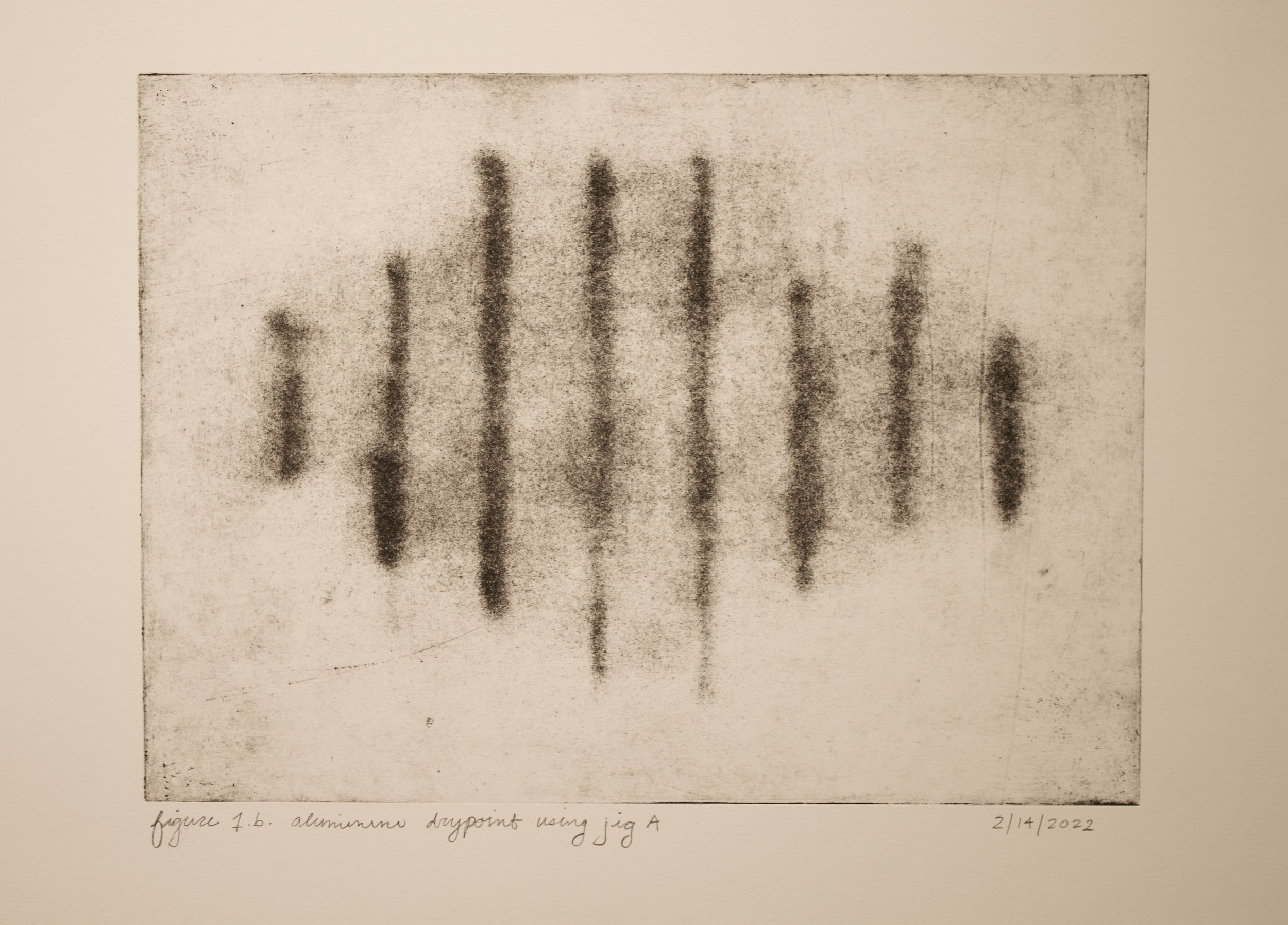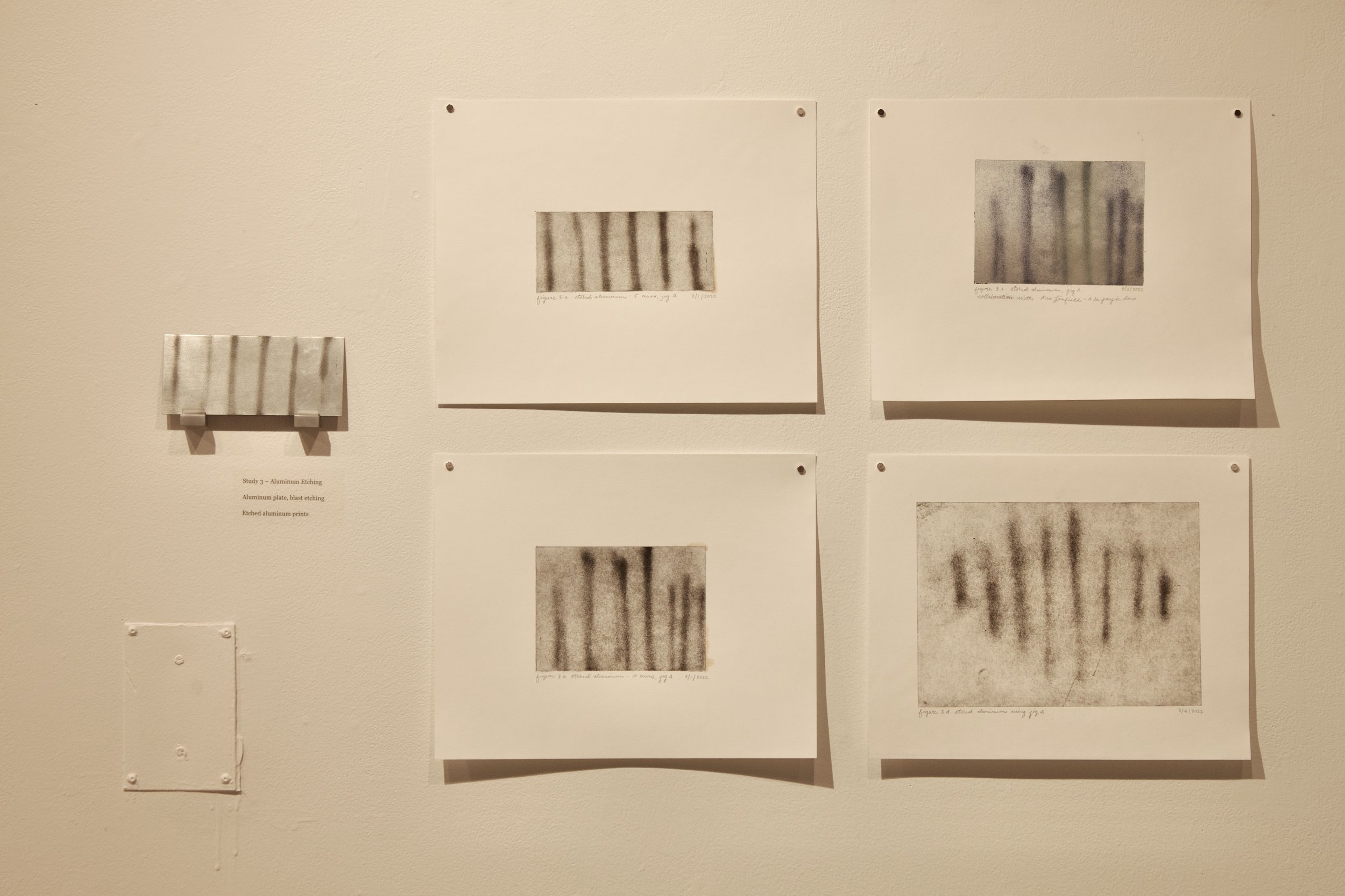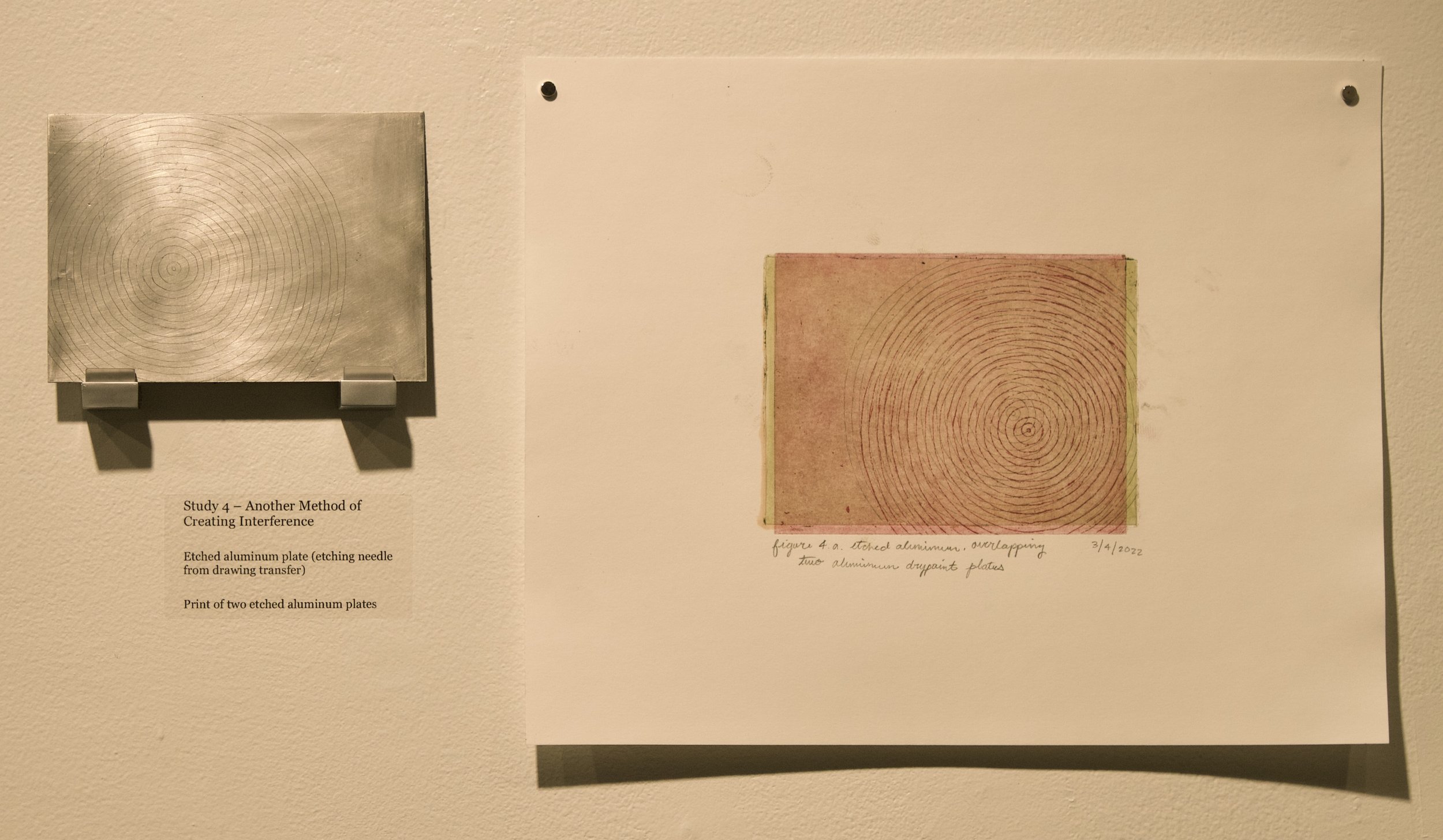The Double-slit Experiment, Revisited was held in March 2022 in the 621 Gallery of the University of Calgary Art Department. This exhibition was part of my coursework as a Master of Fine Art student.
Artist Statement
In their formulation of “ArtScience”, Heylighen and Petrović (2020) suggest that both science and art rely on creative processes and experimentation in the search for meaning or greater understanding. In fact, Albert Einstein and Max Planck both believed that intuition and creativity were essential components of their scientific methodologies (Root-Bernstein et al., 2008).
My creative research investigates abstract concepts and experimental results in the field of quantum mechanics. Methods and techniques I employ in my practice include abstract drawing, painting, sculpture, printmaking, metalworking and programming. Metal has been the material focus for my exploration of concepts from quantum mechanics.
The intention behind my work is to not only inspire curiosity in viewers, but also promote integration of the arts and sciences as a means of developing human knowledge, understanding and problem solving in an age that demands creative solutions.
The Double-slit Experiment, Revisited
This exhibition features works from an ongoing research-creation experiment which revisits a fundamental experiment in quantum science. The strange and fascinating observation of single photon interference revealed by the double-slit experiment was the starting point of my research and creative exploration for this project.
Intaglio printmaking techniques are the underlying structure for the experimental methods developed for this series of studies. To create the first plate, I blasted an aluminum sheet with abrasive as a drypoint technique, impacting it with millions of individual particles in the form of an interference pattern. I continued in this manner using an invented “blast etching” technique, for which I built a jig and stencils that were used as tools for the abrasive blasting of the plates.
The prints can be viewed as interpretations of the information embedded in the plates. Data collection and analysis are ongoing; the results of the experiment have yet to be determined. However, the initial results have an intrigue that seems to raise more questions than it answers... and this feels on track for my experience of quantum mechanics so far!
References
Heylighen, F., & Petrović, K. (2020). Foundations of ArtScience: Formulating the Problem. Foundations of Science, 26(2), 225–244. https://doi.org/10.1007/ s10699-020-09660-6
Root-Bernstein, R., Allen, L., Beach, L., Bhadula, R., Fast, J., Hosey, C., Kremkow, B., Lapp, J., Lonc, K., Pawelec, K., Podufaly, A., Russ, C., Tennant, L., Vrtis, E., & Weinlander, S. (2008). Arts Foster Scientific Success: Avocations of Nobel, National Academy, Royal Society, and Sigma Xi members. Journal of Psychology of Science and Technology, 1(2), 51–63. https:// doi.org/10.1891/1939-7054.1.2.51
